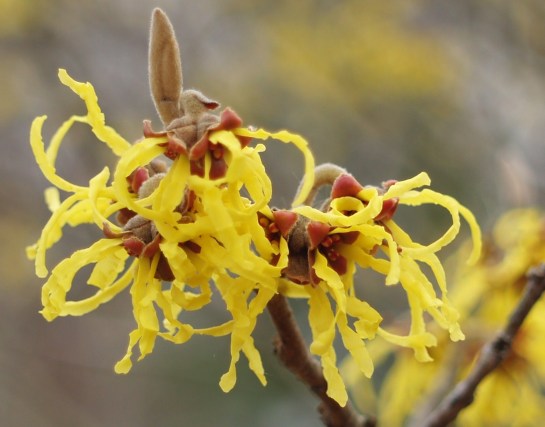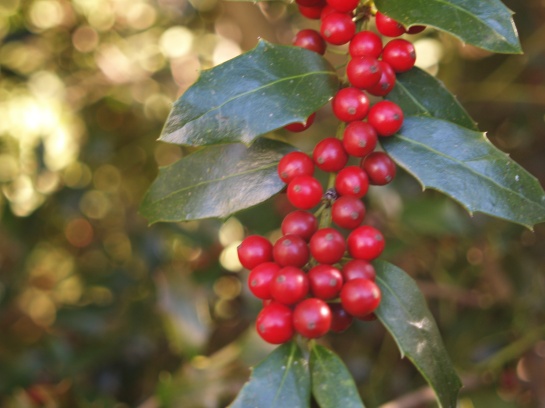As is typical of the winter months in northwestern Virginia, temperatures vary considerably, and the daily high might be fifty-five one afternoon, and then seventeen the next. While plants are dormant these fluctuations are of little consequence, and little or no damage is done, though the cold is often of great concern to gardeners. Long ago I accepted that it does no good to fret about such things, and whether there are more or fewer fluctuations with the general warming of our climate, it seems foolish for the gardener to curse the freeze or chilly breezes.
In my early gardening years (long ago), there was a winter when temperatures did not rise above freezing for weeks, and the nighttime lows dropped to make the gardener fearful that anything could survive (and of course, some plants did not). But, that was out of the ordinary, and in most winters, for every few days of extreme cold there are days that are unusually warm. Whether these things even out or not, the variations are seldom harmful to our garden plants.
The recent cold days with overnight temperatures nearing zero provoked considerable alarm, but only four years ago several days reached zero, and one was a few degrees colder. That spell of cold was barely mentioned by media or coworkers, though at the time it was advised not to forget your stocking cap and mittens. The garden escaped four or five consecutive days of extreme cold without any major issues, and I see no reason to expect problems from the not-so-cold period we’ve just been through.
While roots are protected from short periods of cold by soil that freezes slowly, evergreen foliage, flower buds, and even stems are susceptible to damage from extreme temperatures and drying winds. I’ve planted many hollies (Ilex x ‘HL10-90’, Christmas Jewel holly, above) and assorted evergreens, and only occasionally do I see even a browned leaf resulting from the cold. Newly planted evergreens are a different story, and I’ve lost hollies and camellias in their first winter, before their roots were well established. There seems some slight advantage to providing a wind block for newly planted evergreens, but I’ve considered it too much work for too little benefit.
Today, the foliage of the semi-evergreen Gordlinia (x Gordlinia grandiflora, in flower, above) is brown along the edges, and some leaves are completely brown. This tall growing shrub (or small tree) is a hybrid of Franklinia and Gordonia, both southern plants, and so Gordlinia is questionably cold hardy for my garden. This is the first winter for one smaller shrub, and the second for another, but I expect both will survive and revive without a problem.
In the freeze of 2010 I was particularly concerned about the paperbushes (Edgeworthia chrysantha, above). Limited references indicated that this uncommon shrub was cold hardy only to five degrees, and none seemed very certain that it could tolerate much below ten. The four shrubs had been in the ground for a few years, so I figured they would stand a chance, but the exposed flower buds looked quite sad immediately following the cold, so there was reason for concern.
In fact, the cold did injure some flowers, and if I recall, the paperbushes leafed out a bit later than normal, but they grew like weeds in the spring. Now, the four bushes are twice as wide and half again as tall as most references list as their mature size, and a few sources have revised their cold hardiness estimates a full zone colder. I see no apparent damage to the flower buds from the recent cold, though the buds are swelling much slower than in recent years.
Besides the Gordlinias, nothing else shows any signs of trouble in mid January, except for the tall ‘Arnold Promise’ witch hazel (Hamamelis x intermedia ‘Arnold Promise’, above) and a ‘Patriot’ holly (Ilex x ‘Conot’). Both have issues with constantly damp soil that has plagued this low area of the garden through the past year, and has already caused the demise of a few butterfly bushes (Buddleia) that are not quite as weedy and indestructible as I expected.

Yes, the warm days plays havoc with the Witch Hazel, forsythia, and the like! Most are budding out now after two days in the upper 50s!
It’s been years since winter jasmine has not flowered prior to mid January in my garden, and the witch hazels remain in tight bud – except the vernal witch hazel that is at peak bloom.